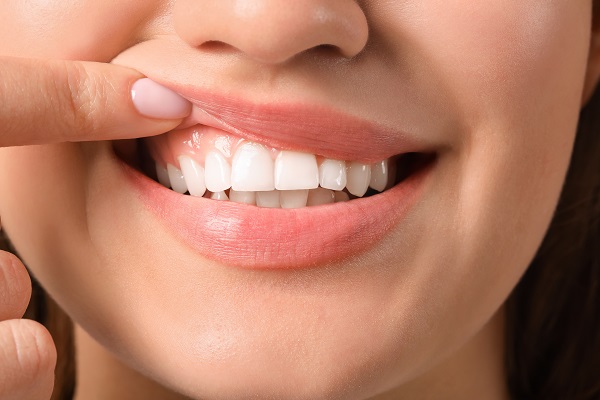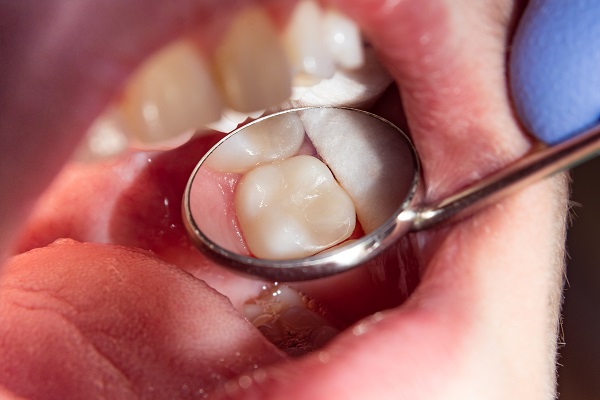What age is too late for Invisalign?

Dr. Simranjit S. Bawa, DDS - a top Diamond+ Invisalign provider - is a proud Potomac native and US-born Sikh whose unwavering commitment to community service and dentistry sets him apart. With a Bachelor's in Biology from American University and a DDS from Howard University, Dr. Simranjit S. Bawa seamlessly integrates state-of-the-art technology with personalized care for patients of all ages. Driven by a passion for prevention and esthetics, Dr. Simranjit S. Bawa excels in everything from full mouth reconstructions to porcelain crowns, ensuring each treatment plan is tailored to enhance smiles and gum health. Off-duty, you'll find him cherishing family time, shooting hoops, hitting high notes, and indulging in culinary adventures from across the globe. Ready to experience dentistry with a personal touch? Say hello to Dr. Simranjit S. Bawa today!
—------------------------------------------------------------------------------------------------------------------------
Imagine your smile is the star of its own blockbuster—and clear aligners are the behind‑the‑scenes crew making every scene shine. From your 20s through your 70s and beyond, Invisalign can craft a dazzling storyline for your teeth. Let’s dive deep into why age is just a number when it comes to achieving the smile you’ve always dreamed of—and how Potomac Crown Dentistry, with Dr. Bawa at the helm, directs each transformation with precision and care.
Why Aligners Aren’t Just for Teens
It’s a common myth that braces—and their modern cousins, clear aligners—are only for high‑schoolers. The truth? As long as your gums and jawbone stay healthy, tooth movement is possible at virtually any age. Adult bone may respond a bit more slowly than adolescent bone, but the end result—a beautifully aligned grin—is just as achievable. Here’s why:
- Continued Bone Remodeling: Even mature bone can be persuaded to shift. Think of it as sculpting a firmer block of clay—it takes steady pressure, but it still yields beautiful contours.
- Lifestyle Compatibility: Busy professionals, parents, and retirees appreciate the freedom clear aligners bring. Enjoy meals, presentations, weddings, and family portraits with minimal disruption.
- Oral Health Boost: Misaligned teeth can harbor plaque and make flossing tricky. Straightening teeth in adulthood often leads to easier cleaning and reduced risk of gum issues down the road.
- Confidence Reboot: A straighter smile can spark renewed self‑esteem at any life stage—whether you’re launching a career or celebrating milestones.
Adults account for a growing share of aligner patients precisely because they value subtle, effective solutions that integrate seamlessly into grown‑up lives.
Behind the Scenes: How Clear Aligners Tell Your Smile’s Story
Clear aligners are crafted from a transparent, medical‑grade thermoplastic that fits snugly over your teeth. Each set applies gentle pressure to shift your teeth incrementally. Here’s a step‑by‑step look at the process:
- Casting Call: Consultation & Scanning
Your journey begins with a visit to Potomac Crown Dentistry. Dr. Bawa captures high‑definition 3D images of your teeth—no gooey molds, just comfortable, precise digital impressions.
- Scriptwriting: Custom Treatment Plan
Using advanced software, we lay out every twist and turn of your tooth‑movement narrative. You even get a sneak‑peek animation of your future smile before the first aligner arrives.
- Wardrobe Fittings: Receiving Your Aligners
Your first set of aligners arrives neatly packaged. Dr. Bawa ensures each tray fits exactly, then provides guidance on insertion, removal, and care.
- Daily Performance: Wearing Your Aligners
To stay on track, wear aligners 20–22 hours per day. Remove them only for eating, drinking anything beyond water, and your regular brushing and flossing routine.
- Director’s Cut: Progress Check‑Ins
Every six to eight weeks, you’ll return for a quick check. We’ll review your progress, make any needed tweaks, and hand you the next sets of aligners.
- Final Screening: Completion & Retention
When your teeth reach their coveted positions, the wrap‑up involves Vivera® retainers—stronger than standard retainers—to maintain your new alignment and prevent relapse.
This carefully choreographed process ensures clear, predictable progress and a finale that wows.
The Perks of Adult Aligner Treatment
While most teens are eager for a faster result, adults often cherish the journey itself. Here are some benefits that resonate particularly well later in life:
- Discreet Confidence: Aligners are virtually invisible—no one needs to know you’re undergoing treatment unless you tell them.
- Comfort & Convenience: Say goodbye to sharp wires and brackets digging into your cheeks.
-
No Food Fears: Enjoy popcorn at the movies and holiday feasts without a second thought—just pop out your trays.
- Simplified Oral Care: Floss and brush normally; then give your aligners a quick rinse to keep them clear.
- Digital Engagement: Apps coordinate appointment reminders, track wear time, and even send motivational nudges—perfect for tech‑savvy adults.
These features make clear aligners the ideal dental (sorry—jaw‑friendly) solution for busy adults.
Debunking Age‑Related Myths
- “My bones are too rigid after 40.”
Reality: Bone remodeling continues well into later decades. With consistent aligner wear, teeth respond beautifully at any age.
- “It’ll take forever.”
Reality: Most adult cases wrap up in 12–24 months—a manageable commitment for a lifetime of benefits.
- “Insurance won’t cover older patients.”
Reality: Many dental plans cover clear aligners for qualifying candidates, regardless of age. Always check your benefits, but don’t let age deter you.
By busting these myths, we pave a smoother path for adults eager to embrace a new smile.
This spring’s headlines carried sobering news: measles cases climbed past 700, and whooping cough (pertussis) surged well beyond last year’s totals WIREDTime. Public‑health authorities warn that skipping routine vaccinations can let minor pockets of infection explode into widespread outbreaks. The lesson for dental care? Delaying minor tooth misalignments can let them evolve into complex bite issues that demand lengthier, costlier interventions. Just as timely shots protect communities, timely aligner treatment safeguards long‑term oral health.
Who’s a Good Candidate at Any Age?
Aligners suit a wide range of adult smiles. Ideal candidates typically:
- Have all permanent teeth in place.
- Maintain healthy gums and jawbone, free from active disease.
- Commit to wearing aligners as directed (20–22 hours per day).
- Face mild to moderate crowding, spacing, overbite, or underbite. Severe skeletal discrepancies may need additional procedures, but many adult cases are straightforward.
A thorough evaluation at Potomac Crown Dentistry confirms candidacy and ensures your treatment plan fits your unique dental landscape.
Potomac Crown Dentistry’s Aligner Cast
When you choose Dr. Bawa and our team, you unlock a suite of clear‑aligner services, including:
Dr. Bawa clear aligners • Invisalign treatment with Dr. Bawa • Dr. Bawa teeth straightening • Invisible braces by Dr. Bawa • Dr. Bawa Invisalign provider • Smile correction Dr. Bawa Invisalign • Custom aligners Dr. Bawa • Dr. Bawa dental alignment • Dr. Bawa adult braces • Dr. Bawa Invisalign consultations
Our practice blends cutting‑edge technology, caring support, and creative flair to direct every smile toward its red‑carpet debut.
Frequently Asked Questions
- At what age can I start clear‑aligner treatment?
As soon as all permanent teeth have erupted—often around age 12—you can consider aligners. For adults, there’s no upper cutoff.
- Will treatment time be longer if I’m older?
Adult tooth movement can be slightly slower, but most finish in 12–24 months—hardly a marathon compared to the momentum of life.
- Do I need any special procedures because of my age?
Occasionally minor enamel reshaping or interproximal reduction helps create space. But for the vast majority, the core plan remains the same.
- How strictly must I wear the trays?
Think of aligners as your daily accessory—20–22 hours each day keeps the story on track. Skipping hours slows progress.
- What happens after aligners?
Enter Vivera® retainers—durable trays worn nightly to seal your new alignment and prevent relapse.
Key Takeaways
- No Age Barrier: Adults from their 20s through their 70s (and beyond) achieve stunning results.
- Subtle & Seamless: Invisible trays slip into professional and social settings without fanfare.
- Health & Confidence: Straight teeth make cleaning easier and boost self‑esteem at any stage.
- Proactive Wins: Tackling minor shifts early prevents complex bite dramas later.
- Personalized Craftsmanship: Every treatment plan is a bespoke script, directed by Dr. Bawa.
Disclaimer: This article provides general information and is not a substitute for personalized dental advice. Always consult Dr. Bawa or another qualified dental professional for recommendations tailored to your unique needs.
Remember: Your smile’s story deserves the best director. Whether you’re just starting your career or celebrating retirement, it’s never too late to step into the spotlight. Schedule your consultation at Potomac Crown Dentistry today, and let us craft your perfect smile ending.
Related Posts

3 Questions to Ask a Restorative Dentist
You might be interested in a consultation with a restorative dentist if you have a damaged.
read more
Why Is Gum Health So Important?
Although it may not seem like it, a person's gum health is vital for the health of his or her entire body.
read more
When a Dentist Would Recommend Tooth Colored Fillings
When teeth become damaged due to cavities or injury, dentists may use tooth colored fillings, also called composite fillings
read more